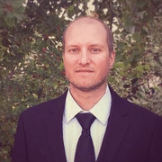
Overview
The overarching theme of the Usselman research program is to use advanced magnetic resonance and optical techniques to address bio-physical chemistry problems in the areas of chemical biology, biomaterials, and redox biochemistry. We aim to develop novel methodologies and instrumentation that address the fundamental gap in knowledge between physical measurements and theoretical models for bio-engineered systems operating at the quantum/classical interface. We seek to understand how quantum properties play governing roles in biological function and apply theory-driven predictions of quantum biology for multi-scale integration of cellular function.
Quantum Sensing in Biology
One of the great challenges of modern science is to bridge the gap between atomic and cellular level phenomena that affect outcomes in living systems. A potentially transformational facet of this challenge is quantum biology (QB): understanding how quantum properties play governing roles in biological functions. Previous QB investigations focused on two main areas of research: photosynthesis and magnetoreception, with other QB areas that include olfaction, proton and electron tunneling. Within the magnetoreception paradigm, we showed that radical pair (RP) reactions in cellular metabolism may be influenced to some extent by quantum biological processes. Subsequently, a fundamentally novel domain of QB has emerged, where quantum mechanisms in reactive oxygen species (ROS) production are altered by electron spin dynamics in RP cellular reactions. The project aims to further advance understanding of how quantum mechanisms are utilized in the normal cellular functions in ROS redox cell biology, bioenergetics, and cellular metabolism. The overarching goal of this project seeks to apply theory-driven predictions of QB for multi-scale integration of quantum, bimolecular, cellular levels, and beyond in biological function.
Quantum Biology Clock
Although recent evidence from other laboratories support our ROS QB hypothesis, many fundamental unknowns remain. Guided by our previous results in ROS QB, we present a novel platform with regards to biological timing and clocks. Traditional biological clocks are commonly termed molecular clocks (digital and most often protein or epigenetic-based) or time clocks (analog or circadian-based). With the emergence of our work in quantum sensing and integration of key concepts of the molecular and time clocks, we have developed a framework for what we call a quantum biological clock (QBC). Here, the QBC will serve as the foundation for the molecular and time clocks and their ultimate function in cell metabolism. Although there exists much evidence for a QBC, the impact of quantum phenomena on biological function has not been rigorously investigated. Here, we propose that stimuli, distinct from genetically coded information, significantly impacts cellular function. These may include redox status in oxidative signaling, ion concentrations, magnetic spins, local electric fields, systems oscillators, temperature, and mechanics. Emerging data from our lab and others suggest that these forces influence the time dependence of information transfer. For example, impairing the cellular NAD+/NADH redox balance slows the molecular clock by impairing protein synthesis, and delays embryonic development. In this way, the time required to transfer information may be equally or more important than the coded message itself. The focus here is electrons spins, ROS, bioenergetics, and redox.
